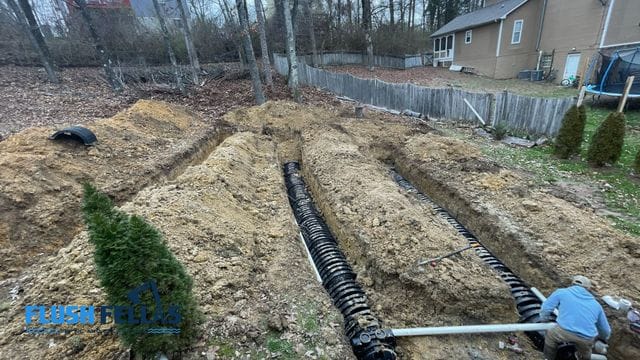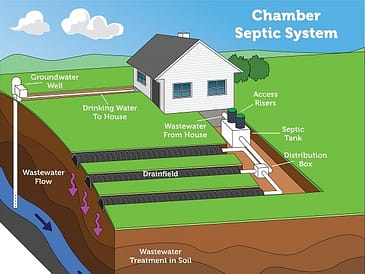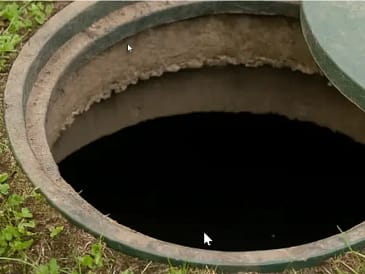If you’re a homeowner with a septic system, you’ve probably wondered: How much does a septic tank inspection cost? Whether you’re maintaining your property or buying a new home, understanding the costs and process of a septic inspection is essential for peace of mind—and for your budget.
In this comprehensive guide, we’ll break down everything you need to know: average costs, what’s included, factors that affect price, tips for saving money, and why regular inspections matter. Let’s dig in!
Why Septic Tank Inspections Matter
Before we crunch the numbers, let’s talk about why you need a septic tank inspection in the first place. Your septic system is a hidden workhorse, quietly treating your household wastewater. But like any system, it can develop problems—often without obvious warning signs.
“Most major septic failures start with small, undetected issues,” says Jane Holloway, a certified septic inspector from Vermont. “Regular inspections catch these problems before they turn into expensive repairs.”
A septic tank inspection can:
- Prevent costly repairs or replacements
- Protect your property value
- Ensure compliance with local regulations
- Safeguard your family’s health and the environment
What’s Included in a Septic Tank Inspection?
When you schedule a septic tank inspection, what exactly are you paying for? A standard septic inspection typically includes:
- Locating the tank and access lids: Sometimes tanks are buried, and finding them can take time.
- Checking sludge and scum levels: Inspectors use special tools to measure how full your tank is.
- Examining baffles and filters: These critical components keep solids out of your drain field.
- Visual inspection of the tank’s condition: Looking for cracks, leaks, or corrosion.
- Assessment of the drain field: Checking for soggy areas or odors that might indicate failure.
- Testing water flow: Ensuring wastewater is moving properly from your house to the septic system.
Some inspectors use cameras for a more detailed look inside pipes and tanks, especially if they suspect a problem.
“Think of it like a check-up for your home’s plumbing,” explains Tony Ramirez, owner of a septic service company in Texas. “You want a professional who doesn’t just look at the surface, but really understands how your whole system works.”
Average Cost of a Septic Tank Inspection
So, how much does a septic tank inspection cost in 2024? Let’s break it down.
National Average:
Most homeowners pay between $250 and $500 for a standard septic tank inspection. The national average is around $350.
However, prices can vary based on several factors:
| Service Type | Typical Cost Range |
|---|---|
| Basic Visual Inspection | $100 – $250 |
| Full Inspection (with pumping) | $300 – $700 |
| Camera Inspection | +$150 – $400 |
| Real Estate Transaction | $300 – $600 |
Note: If your tank needs to be pumped as part of the inspection, expect to pay an additional $200 to $500.
Factors That Affect Septic Inspection Costs
1. Location
Your region has a big impact on cost. For example, the average cost of septic tank inspection near me in rural Ohio might be just $200, while in California or New York, it could reach $500 or more. Urban areas often see higher prices due to increased labor rates and permitting requirements.
2. Accessibility
If your tank is buried deep or hard to access—maybe under a deck or landscaping—inspectors may charge more.
3. System Size and Complexity
Larger or more complex systems (like those for multi-family homes) take longer to inspect and cost more.
4. Inspection Type
A simple visual inspection is cheaper than a full inspection that includes pumping or camera work.
5. Local Regulations
Some states require more thorough inspections, especially during real estate transactions, which can increase the price.
6. Additional Services
Need a septic pumping or a detailed camera inspection? Each extra service adds to the total.
State-by-State and City Cost Examples
Let’s look at some real-world examples, so you know what to expect in your area. Here’s how much a septic tank inspection might cost in different places:
- Florida: $250–$400 (higher in coastal areas)
- Texas: $200–$350 (expect higher prices in large cities)
- California: $350–$600 (especially in the Bay Area and SoCal)
- New York: $300–$500 (Long Island on the higher end)
- Ohio: $175–$350 (smaller towns are cheaper)
- Washington State: $300–$500 (Seattle metro area)
If you Google “how much does a septic tank inspection cost in [your city],” you’ll get more precise local estimates.
Septic Tank Inspection Cost Breakdown
To understand where your money goes, here’s a typical cost breakdown:
- Labor: $100–$300 (for 1-2 hours of work)
- Equipment and tools: $30–$100 (meters, cameras, etc.)
- Travel fees: $25–$75 (especially if you’re far from town)
- Report and paperwork: $25–$50 (detailed inspection report, required for home sales)
If you opt for pumping, add $200–$500 depending on tank size and local rates.
What to Expect During Your Septic Inspection
Here’s what usually happens when you schedule an inspection:
- Appointment & Arrival: The inspector arrives, reviews your system’s location, and discusses any concerns.
- Locating the Tank: They’ll use maps or probes to find your septic tank and access lids.
- Accessing the Tank: Lids are opened (sometimes they need to dig, which may cost extra).
- Measuring Sludge & Scum: Using a “sludge judge” or similar tool.
- Visual Inspection: Check the tank’s structure, baffles, and outlet filter.
- Drain Field Check: Walk the property, looking for signs of failure.
- System Testing: Water may be run through the system to check flow and drainage.
- Report: You’ll receive a written report, often with photos and maintenance recommendations.
“Don’t be afraid to ask questions,” suggests Lisa Kent, a real estate agent in Maine. “A good inspector will explain what they see and what it means for your home.”
Septic Inspection for Home Purchase
If you’re buying a home with a septic system, a thorough inspection is a must. Many lenders and local health departments require it before closing. This inspection is often more detailed than a routine check and can cost a bit more—usually $350 to $600.
Pro Tip:
Make sure the inspector is licensed and experienced with real estate transactions. Their report will be critical for your negotiations and peace of mind.
Septic Inspection vs Pumping Cost
A common question is: Do I need to pump my tank as part of the inspection?
Not always. If your tank was pumped recently and levels are low, the inspector might not recommend pumping. However, if the tank is full or it’s been years since your last service, it’s smart to combine inspection and pumping. This usually adds $200 to $500 to the bill, but saves you a separate trip fee.
How Often Should You Get a Septic Tank Inspection?
Routine inspections are the best way to catch problems early. Most experts recommend:
- Every 3–5 years for a typical household
- Annually if you have a large family, rental property, or older system
- Before buying or selling a home
“Don’t wait until you have a problem,” warns Tony Ramirez. “By then, the fix could cost thousands more than a simple inspection.”
Signs You Need a Septic Tank Inspection
How do you know it’s time to call in the pros? Watch for these warning signs:
- Slow drains or gurgling pipes
- Sewage odors inside or outside your home
- Lush, soggy patches in your yard (especially above the tank or drain field)
- Toilets backing up or draining slowly
If you notice any of these, schedule an inspection ASAP to avoid a major headache.
How to Save Money on Septic Tank Inspections
Everyone wants to save a buck! Here are a few tips:
- Bundle services: Schedule inspection and pumping together to save on travel fees.
- Shop around: Get quotes from several local companies—prices can vary widely.
- Ask about maintenance plans: Some providers offer annual inspection packages at a discount.
- Be prepared: Know where your tank is and keep the access lids clear; this can reduce labor time.
- DIY pre-checks: While you should never open a tank yourself, you can check for surface issues like odors or soggy ground.
Frequently Asked Questions
- Is septic inspection required by law?
In many states, yes—especially during property transfers. Check your local health department regulations. - Do I need a permit?
Some jurisdictions require a permit or report filing for inspections and pumping. Your inspector should know the rules. - Can I inspect my septic tank myself?
It’s not recommended. Septic tanks contain dangerous gases and bacteria. Always hire a licensed professional. - How long does a septic inspection take?
Most inspections take 1–2 hours, longer if your system is hard to access or needs pumping.
The Bottom Line: Is a Septic Tank Inspection Worth It?
Absolutely. The cost of a septic tank inspection—usually $250 to $500—is a small price to pay for protecting your property, health, and wallet. Major system failures can cost $5,000 to $20,000 to fix or replace. Compared to that, a regular inspection is a smart investment.
As Jane Holloway puts it: “A $350 inspection can save you from a $10,000 nightmare. It’s the best insurance you’ll ever buy for your home.”
Summary Table: Septic Tank Inspection Costs
| Location | Average Cost | High-End Cost |
|---|---|---|
| National Average | $350 | $500 |
| Florida | $250 | $400 |
| Texas | $200 | $350 |
| California | $350 | $600 |
| New York | $300 | $500 |
| Ohio | $175 | $350 |
Final Tips
- Always choose a licensed, experienced inspector
- Check their reviews and ask for references
- Keep records of your inspections for future home sales or repairs
- Don’t skip inspections—regular checks are cheaper than emergency repairs




